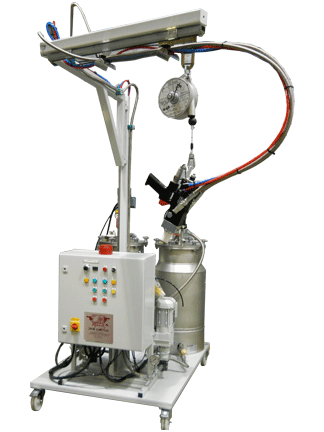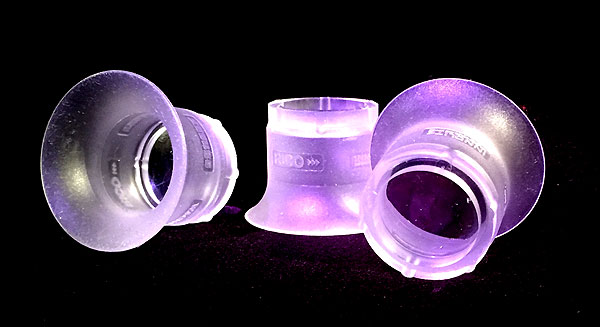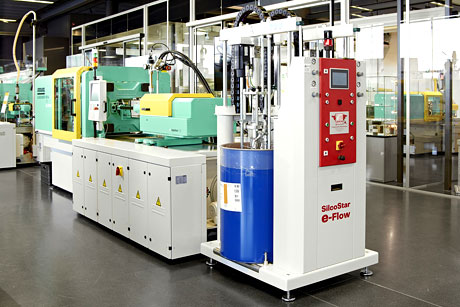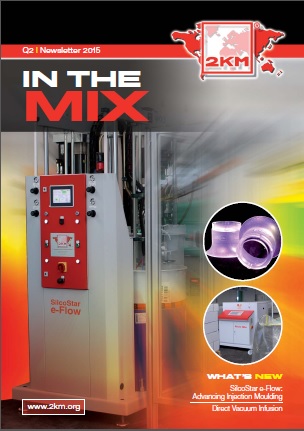The 2KM systems are used in numerous industries and applications. The present case study, describes the solution that has been given with a modified version of the PGM 101.
The problem

A clinical and surgical skills training product manufacturer was facing performance problems with their two component metering and mixing systems. With faulty equipment hindering their production, they contacted 2KM to help with their process.
Process Requirements
With a new product under development and soon to be launched, the manufacturer assigned 2KM to design and build two new systems. The machines would have to process low viscosity silicones at flow rates up to 4 litres per minute at a ratio of 100:100, for the manufacturing of silicone components. The anatomical models produced with the above mentioned method are used in the training of medical students and professionals providing a hands-on approach. The systems had to be reliable, user friendly and efficient providing a continuous flow of operation.
The solution
2KM provided advice and technical assistance in the modification and repairing of the existing machines, to get production back on track while the new machines were being built.
A modified version of the entry level Process Gear Mix 101 had been suggested as the optimum solution to support the production processes they already had in place, providing a cost effective system in compliance with the given specifications.
The machines are designed to control the whole process, from transferring the raw materials from the supplier’s drums, conditioning the materials prior to the metering process, to dispensing into the moulds.
The System’s characteristics
The PGM 101’s are self-contained systems, providing material conditioning, metering and mixing, mounted on a moveable chassis. The system’s core operation is based on the independent inverter drive of two gear metering pumps. The metering pumps provide positive displacement of the pressure fed A and B component. The independent inverter driven motors couple to the metering pumps and rotate at a pre-set speed to provide the required flow rate and mix ratio. Once set, the on ratio materials can be delivered to a hand held dispense valve at various flow rates due to the linear adjustment in drive speed of each inverter. The two streams of material meet at the outlet of the dispense valve and are homogeneously blended in a static mixer.
The A and B components are transferred from the drums under vacuum in to the 90 litre pressure vessels. When the transfer is completed, the vessel is placed under vacuum to degas the material and the built in agitator commences to aid the removal of air. The pressure vessel lid is equipped with a sight glass and lamp to enable monitoring of the vacuum process without any disruptions.
Customised solution
An articulated boom assembly was incorporated to the design to enable the weight and transfer of the hose pack and dispense valve to be taken away from the operator. The above mentioned method eliminates any trip hazards presented by trailing hoses on the floor. The boom has track system along the length of the arm and a retractable counter balance to enable easy movement of the dispense valve to the moulds. Practically, the dispensing can be done away from the machine without loss of consistency.
Outcome
The manufacturer has now six 2KM machines and we are assigned as the sole supporters of their manufacturing process.



